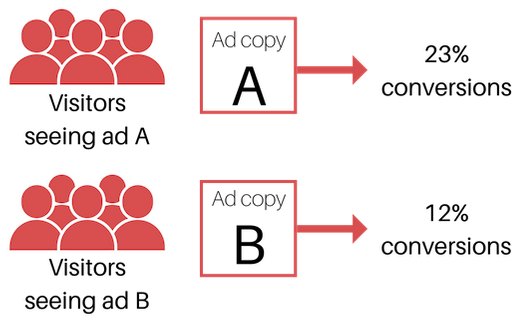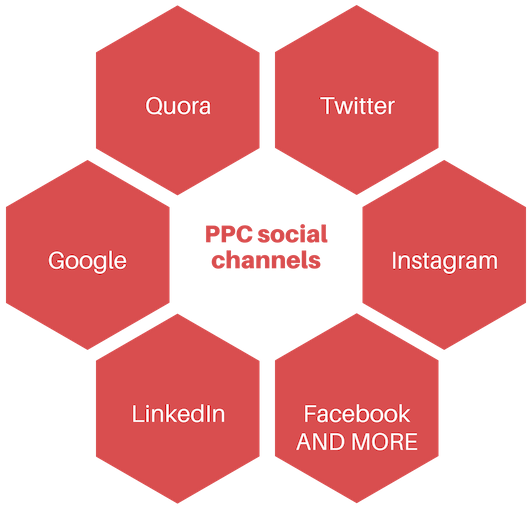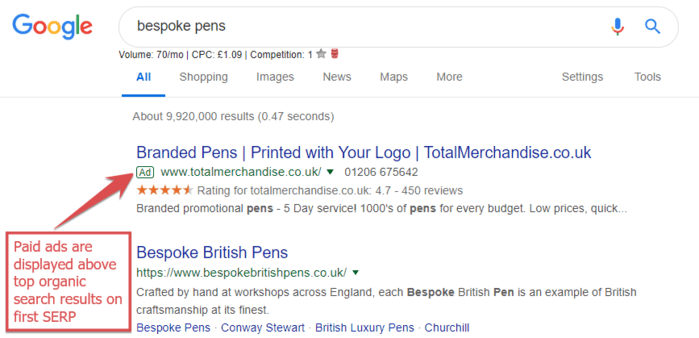How does PPC complement SEO?
Before we tackle the relationship between PPC and SEO, let’s introduce both concepts.
Search Engine Optimisation (SEO) encompasses the technologies, techniques, processes and tactics used to achieve the highest organic rankings in search engine results pages (SERPs) — leading to increased chances of higher website traffic and business success.
PPC stands for Pay Per Click, an internet marketing channel in which an advertiser pays for clicks on their advertisements once they appear within the aforementioned SERPs.
Both areas were born in the ‘90s and have existed in parallel, with some crossover, where the work and research of each discipline compliment one another.
Rather than pit one against the other, throughout this blog, I am going to highlight the ways in which PPC advertising can complement SEO efforts.
A shared goal
The end goal for both SEO and PPC is to drive increased and relevant traffic to a website in order to improve business performance, increase revenue, or to achieve other business goals.
Both disciplines are dependent on site speed, landing page quality, and keyword relevance.
While organic search and SEO is often described as a marathon, and not a sprint, PPC provides a more immediate pathway to visibility and prominence within SERPs.
This does however come at a sunk cost — very much like the metaphor of renting versus buying a house. In theory, both provide a home, but renting versus paying off a mortgage are two very different long-term costs.
Let’s look closer at each area of improvement.
Identifying keywords to target and ad copy split testing for engaging landing page copy

PPC can help by running ad copy via split testing to find the most relevant and engaging message for your audience.
A split test is a method designed to compare multiple ad copy options in order to see which performs better and which should be used for your product or service.
This can serve as an extra tool for making analytics-based decisions in your SEO strategy. An advantage of PPC ad copy testing is quick results.
This method is also known as A/B testing, which can easily be expanded to A, B, C, and multiple testable variations.
However, it is not recommended to test more than four variants at the same time as that may increase the duration of the testing period.
This is because you need to get adequate sample sizes to make an informed, data led decision.
Split tests can help:
- Measure customer response to your ad.
- Optimise your website to include the most relevant message.
- Reduce risks before making permanent changes to the website.
- Improve overall business performance.
Another area where PPC can assist SEO is by showing which keywords get the most conversions so that SEOs can also target those keywords.
This compliments the intent analysis process that SEOs go through, and can help inform it as another, highly qualified, data set.
These learnings can then be used on a macro level to inform wider strategy, as well as on a micro level through meta tag optimisation. Even to the point of landing page copy.
You can use this as part of your keyword mapping strategy.
If you know which keywords have high sales, then you can consider whether you want to target these keywords more by setting up a specific landing page for them.
If there are relevant keywords with a high volume, but a poor conversion rate, then you can start to tackle the reasons why people may not be converting.
Perhaps a new, more targeted page is required because the current landing page isn’t targeted enough to attract the right audience?
Split test landing pages in your ads on a particular keyword to decide which landing page you should target for a particular keyword in organic results.
Use this secondary reference point to determine fluctuations in traffic, e.g. if organic traffic drops, and you notice that PPC traffic dropped as well, then this is a stronger case to be made that it is down to seasonality.
Increase visibility and gain social media exposure

In a lot of competitive verticals, sustained ranking in traffic driving positions comes over time, even if you achieve the coveted first position.
The chances are that there will be one to four search results above you, which you can achieve with PPC, and this won’t go unnoticed by users as organic results are pushed further down the page.
And that’s not even factoring in if Google is displaying any other special content result blocks (SRCBs).

With PPC you can compensate for difficult or competitive SERPs by increasing your website visibility.
PPC can also be implemented on social media channels to both compliment organic performance and widen audience targeting to increase brand exposure.
With PPC, you can get your content in front of millions of internet users on Facebook, Instagram, Twitter, Reddit, and LinkedIn.
This is a great way to gain social media exposure, get your content shared by social media influencers, and drive traffic to your website.
Each social media platform carries a different audience and content style, so this is a great exercise to test new approaches.
Using PPC as a temporary fix in case of a Google penalty
A Google penalty is a manual or algorithmic punishment imposed on websites that do not align with Google’s terms of service or guidelines.
There is a multitude of reasons why Google may penalise your website, resulting in a loss of organic rankings and traffic. Among the manual action penalties, causes tend to be due to:
- Breaking Google’s guidelines regarding unnatural linking practices.
- Using user deceptive techniques.
- The result of a hacking and your website becoming harmful to users.
While part of your focus needs to be on resolving the issues that lead to either the manual action or algorithmic penalty, the business needs to resume normality amongst the chaos, and a loss in organic traffic can be subsidised in the short term with PPC.
This may come at an increased cost to the business, as you’ll now be using resources for SEO (and resolving the issue), and growing and supporting another channel at the same time.
As a temporary measure, running PPC advertisements on a keyword can pick up the traffic that you have lost.
Although your website might have dropped in visibility, or if has been banned from showing up entirely, paid advertisements can get your brand to the forefront of SERPs, to help maintain a stream of traffic, and to keep the website in sight of potential customers.
In summary
While SEO is considered to be “free” by a lot of businesses, and PPC a direct cost — both cost money but have indirect costs, and much more indirect ROIs.
Understanding this isn’t necessarily easy.
However, by taking a holistic approach to boosting your search engine performance, and combining both methods to compliment each other, you can yield great rewards.
Keep in mind that PPC requires budgeting, however, and use it as an additional data source and a testing ground for your business strategy.